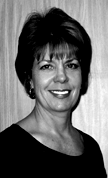 | Lucy Lavelle, RN, is a clinical liaison for Wesley Rehabilitation Hospital. As a certified diabetes educator, Lucy helped develop a class about diabetes that is offered each week to patients and their family members. Lucy is also available to speak to community groups on the topic of diabetes. Wesley Rehabilitation Hospital, an affiliate of HealthSouth, is a provider of inpatient and outpatient physical, occupational and speech-language therapies and exclusive home of the AutoAmbulator robotic treadmill. Lucy can be reached at Wesley Rehabilitation Hospital, 8338 W. 13th Street in Wichita, 316-729-9999. |
Health & Rehabilitation
2007-09-01 14:51:00
What is a Bioness machine?
Answer: What your friend is referring to is a device known as the NESS H200 Neuroprosthetic and Rehabilitation System, trademarked by the Bioness Company of California.
The NESS H200 is a brace-like device that fits over the hand and wrist, which, through electrodes custom-fitted over key motor points, provides stimulation to paralyzed muscles. The device is portable and, with the aid of a trained occupational therapist, can be repositioned and reprogrammed to redirect the stimulation as the muscles become active.
The paralysis in your friend’s hand can also occur as the result of a traumatic brain injury, spinal cord injuries or other disorders of the central nervous system. Needless to say, when a person is left with limited use of the hand or other upper extremities, it can be difficult for them to manage simple daily tasks without assistance.
Even performing such activities as eating with utensils, drinking from a cup, brushing teeth, buttoning a shirt or combing hair can be tiresome or impossible without someone else’s help.
Used as part of an occupational therapy regimen, the NESS H200 can help patients regain their independence by improving functionality in the hand and wrist. The device is designed to facilitate active hand movement, reduce stiffness, improve circulation and increase strength. As a result of using the device as part of a therapy regimen, patients have seen an increase in range of motion, mobility, sensation and functionality of their hands.
The NESS H200 has proven effective for people in the early stages of recovery as well as for those who have seemingly reached a plateau in recovery post-injury or illness.
For patients at either end of the recovery spectrum, the device has made it possible for them to participate in their therapy and given them an exciting new avenue of hope as they work to regain their independence.


